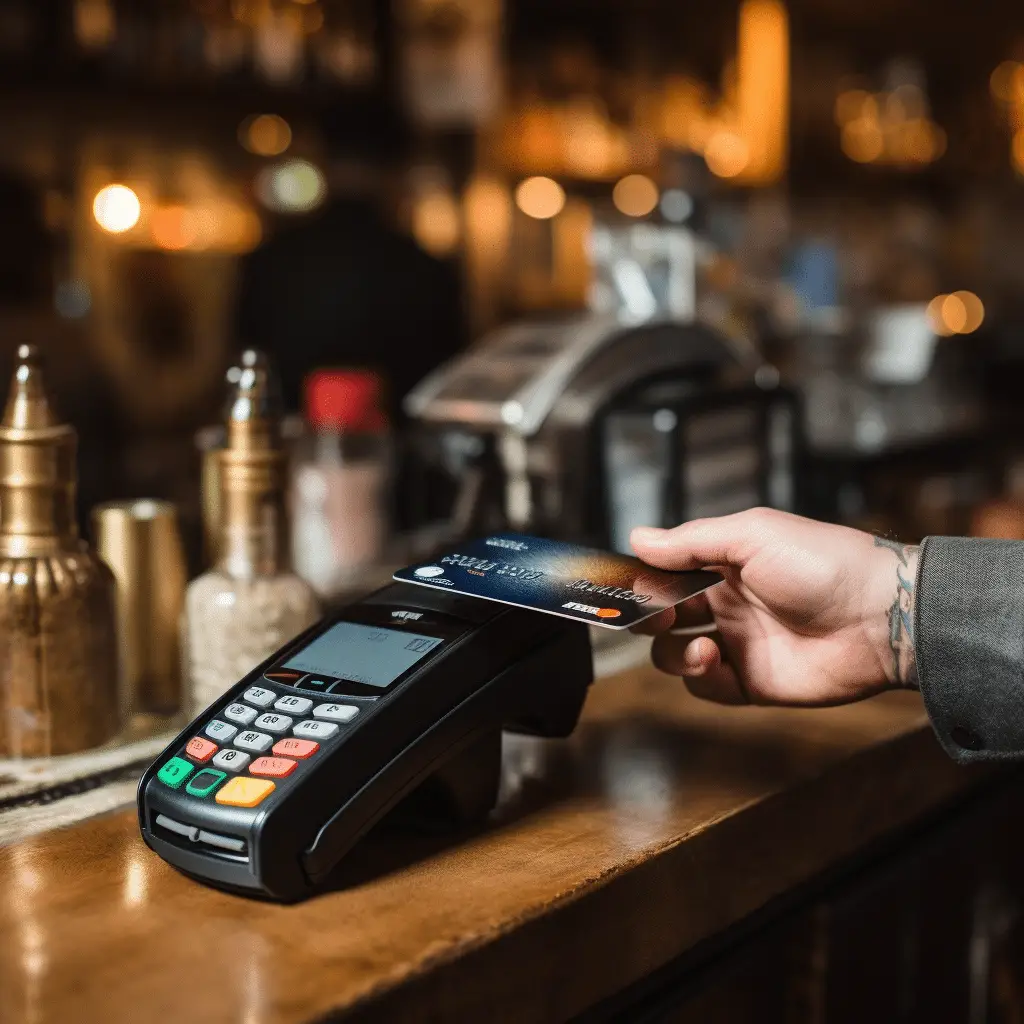Smart cards have become essential components in modern access control systems, playing a crucial role in enhancing security measures and streamlining entry processes. These innovative cards have revolutionized the payment landscape, offering both enhanced security and convenience. Smart cards are essential to modern banking due to the rise of contactless transactions and the need for touchless experiences. Security, compliance with payment legislation, familiarity with biometric technology, and interoperability with POS hardware are driving the biometric payment card market.

Key Takeaways:
- Smart cards are vital in modern access control systems for enhanced security and streamlined entry processes.
- They revolutionize the payment landscape, offering secure and convenient solutions.
- The biometric payment card market is growing due to increased security, regulatory compliance, and consumer familiarity with biometric technology.
- Smart cards are compatible with existing point-of-sale (POS) hardware, making their adoption smoother.
- They play a crucial role in the transformation of transactions and the future of modern banking.
The Impact of Contactless Transaction Limits
The COVID-19 pandemic has revolutionized the way we make payments, with contactless transactions becoming the new norm. One significant impact of this shift is the increased limits for contactless transactions. These higher transaction limits provide greater flexibility and convenience for consumers, allowing them to make larger purchases without the need for physical contact or the hassle of entering a PIN.
With the adoption of biometric payment cards, the impact of increased transaction limits is even more significant. Biometric payment cards utilize fingerprint recognition technology, providing an extra layer of security and authentication. This, coupled with the increased transaction limits, helps mitigate the risk of fraud and enhances the overall security of transactions. It also ensures compliance with regulations such as the Second Payment Services Directive (PSD2) and Strong Customer Authentication (SCA) requirements.
Limits on contactless transactions are likely to remain an important part of the payment environment as the world slowly recovers from the pandemic. Contactless payments are a good choice for both customers and businesses because they are safe and easy to use, especially when combined with biometric payment cards. Mobile transaction limits may become irrelevant, but business will alter for a long time.
The Impact of Contactless Transaction Limits
Increased transaction limits have brought significant changes to the way we make payments. The agility and convenience provided by contactless transactions, coupled with the added security of biometric payment cards, have transformed the payment landscape. We expect safer, faster contactless payments to remain popular as we adjust.
| Benefits of Increased Transaction Limits | Enhanced Security with Biometric Payment Cards | Compliance with Regulations |
|---|---|---|
|
|
|
As we look ahead, contactless transaction restrictions and biometric payment cards will shape payments. They appeal to businesses and consumers due to their higher limitations and security. Contactless transaction limitations will bring ease, security, and compliance to the payment ecosystem as technology and regulations evolve.
Overcoming Challenges in Adoption
The adoption of biometric payment cards has faced several challenges that have impacted their widespread adoption in the market. One of the primary challenges is the price point of these cards compared to traditional smart cards. The higher cost has made it difficult for issuers to attract a large customer base. However, there is a gradual decrease in the pricing of biometric payment cards, making them more affordable for consumers.
Another challenge that has hindered the adoption of biometric payment cards is the profit margin that issuers seek. They aim to maintain a certain profit margin, which has slowed down the decreasing price point. By revisiting the target margin and increasing economies of scale, issuers can further reduce the price of biometric payment cards, making them more accessible to a wider audience.
The chipset shortage should be resolved soon thanks to ongoing efforts.
We expect biometric payment cards to become more ubiquitous as prices drop and chipset shortages end. These cards are convenient and secure for consumers and companies. Biometric payment cards will change transactions as technology advances.
Table: Challenges in Adoption of Biometric Payment Cards
| Challenge | Description |
|---|---|
| Price Point | Higher cost compared to traditional smart cards |
| Profit Margin | Issuer’s target margin slowing down pricing decreases |
| Chipset Shortage | Disruption in production and distribution due to limited availability of chipsets |
Suspension and Resumption of Smart Card Distribution
In preparation for the upcoming national parliamentary elections, the Election Commission has announced the suspension of smart card distribution starting from 1 November. This temporary halt in distribution aims to create a conducive environment for the elections. To streamline the voting process, smart card deployments will be hastened and field-level programs completed by October 30.
The suspension will remain in effect until the completion of the elections, as directed by the commission. Following the conclusion of the electoral proceedings, smart card distribution will recommence. This decision reflects the Election Commission’s commitment to prioritizing the election process and maintaining a fair and transparent voting system.
The temporary suspension of smart card distribution is a necessary measure to focus resources and efforts on the electoral process. It underscores the importance placed on conducting free and fair elections and ensuring the accuracy and validity of voter identification. The Election Commission upholds the highest electoral integrity and transparency requirements.

Conclusion
Smart cards have transformed banking due to the surge in contactless transactions and demand for touchless experiences. Security, payment limitations, and biometric technology familiarity require biometric payment cards. These cards reduce fraud, comply with PSD2 and SCA, and protect users.
Chipset and cost concerns are preventing biometric payment card rollout, but they are being rectified. Biometric payment card prices will drop due to reduced goal margins and scalability. Solving chip shortages improves availability and lead times.
Smart cards will change transactions and remain essential to modern banking and access control systems as they become more ubiquitous. Smart cards will change secure transactions with their improved security, faster entry, and simplicity.
FAQ
How do smart cards enhance security in access control systems?
Smart cards play a crucial role in enhancing security measures in access control systems. They provide secure authentication and authorization, preventing unauthorized access and protecting sensitive information.
What is the impact of contactless transaction limits on the adoption of biometric payment cards?
The increase in contactless transaction limits has provided agility in making payments and reduced the need for physical touch. This trend has accelerated the adoption of biometric payment cards, which offer a secure and convenient touchless payment experience.
What are the challenges in the adoption of biometric payment cards?
One of the challenges is the higher price point compared to traditional smart cards. However, the pricing of biometric payment cards is gradually decreasing, making them more affordable. Another challenge is the chipset shortage, which has resulted in longer lead times and increased costs. However, these issues are being resolved, and the market for biometric payment cards is expected to become more commonplace.
Why has the smart card distribution been suspended?
The smart card distribution has been suspended by the Election Commission in preparation for the upcoming national parliamentary elections. This decision aims to ensure a conducive environment for the elections. The distribution will resume after the elections are completed.
What is the role of smart cards in modern access control?
Smart cards have become indispensable in modern access control systems. They enhance security, streamline entry processes, and provide a safer environment. Their use has revolutionized how access control is managed.

